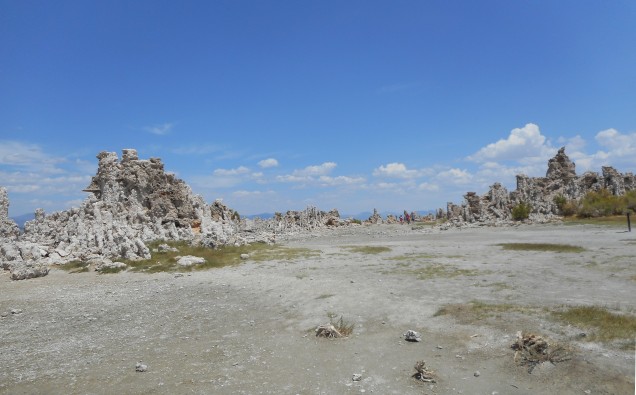
Mono Lake in California, August 2014, Photo: Maryphillips1952/Wikimedia Commons
Wetter regions are becoming wetter, and drier regions are becoming ever drier, a new report warns citing impacts of climate change that may cause flooding in some areas and deprive others of the vital natural resource.
Currently, an estimated 3.6 billion people, nearly half the global population, live in areas potentially water-scarce at least one month per year, and this population could increase to some 4.8 billion to 5.7 billion by 2050. That may make S.T. Coleridge’s lines – water, water every where – from the famous poem The Rime of the Ancient Mariner come true, although with a difference. The regions affected by both flooding and droughts would be around the globe.
The threat of the water crisis demands immediate and new precautionary ways.
“We need new solutions in managing water resources so as to meet emerging challenges to water security caused by population growth and climate change,” Audrey Azoulay, head of the UN Educational, Scientific and Cultural Organization (UNESCO), notes in the foreword of the UN World Water Development Report 2018.
“If we do nothing, some five billion people will be living in areas with poor access to water by 2050,” she adds.
The global demand for water has been soaring and will continue to grow significantly over the next two decades due to population growth, economic development and changing consumption patterns.
The number of people at risk from floods is projected to rise from 1.2 billion today to around 1.6 billion in 2050, nearly 20 per cent of the world’s population.
The population currently affected by land degradation, desertification and drought is estimated at 1.8 billion people, making this the worst natural disaster based on mortality and socioeconomic impact relative to gross domestic product (GDP) per capita.
The UNESCO Director-General said the report proposes solutions that are based on nature to manage water better.

The report notes that reservoirs, irrigation canals and water treatment plants are not the only water management instruments at disposal.
So-called ‘green’ infrastructure, as opposed to traditional ‘grey’ infrastructure, focuses on preserving the functions of ecosystems, both natural and built, and environmental engineering rather than civil engineering to improve the management of water resources, the report says.
In 1986, the province of Rajasthan in India experienced one of the worst droughts in its history. Over the following years, a non-governmental organization worked alongside local communities to regenerate soils and forests in the region by setting up water harvesting structures. This led to a 30 per cent increase in forest cover, groundwater levels rose by several meters and cropland productivity improved.
The UN 2030 Agenda for Sustainable Development seeks to achieve universal and equitable access to safe and affordable drinking water for all and, also access to adequate and equitable sanitation and hygiene for all by 2030.
The threat of water crisis has increased the importance of finding nature-based solutions, such as China’s rainwater recycling, India’s forest regeneration and Ukraine’s artificial wetlands.
China’s Sponge City aims to recycle 70 per cent of rainwater. Faced with an ever-increasing demand for water, China recently initiated a project, entitled ‘Sponge City,’ to improve water availability in urban settlements with the aim of recycling 70 per cent of rainwater.
Over recent years, Ukraine has been experimenting artificial wetlands to filter some pharmaceutical products from wastewater based on evidence that wetlands alone can remove 20 to 60 per cent of metals in water and trap 80 to 90 per cent of sediment from runoff.
Despite emerging initiatives, the use of nature-based solutions remains marginal and almost all investments are still channeled to grey infrastructure projects, the report points out.
The report is the fruit of collaboration between the 31 UN entities and 39 international partners that comprise UN-Water.
The report, whose publication coincides with World Water Day annually observed on 22 March.
















